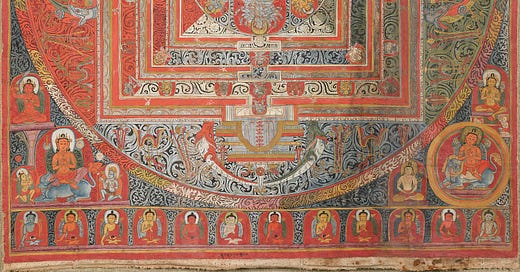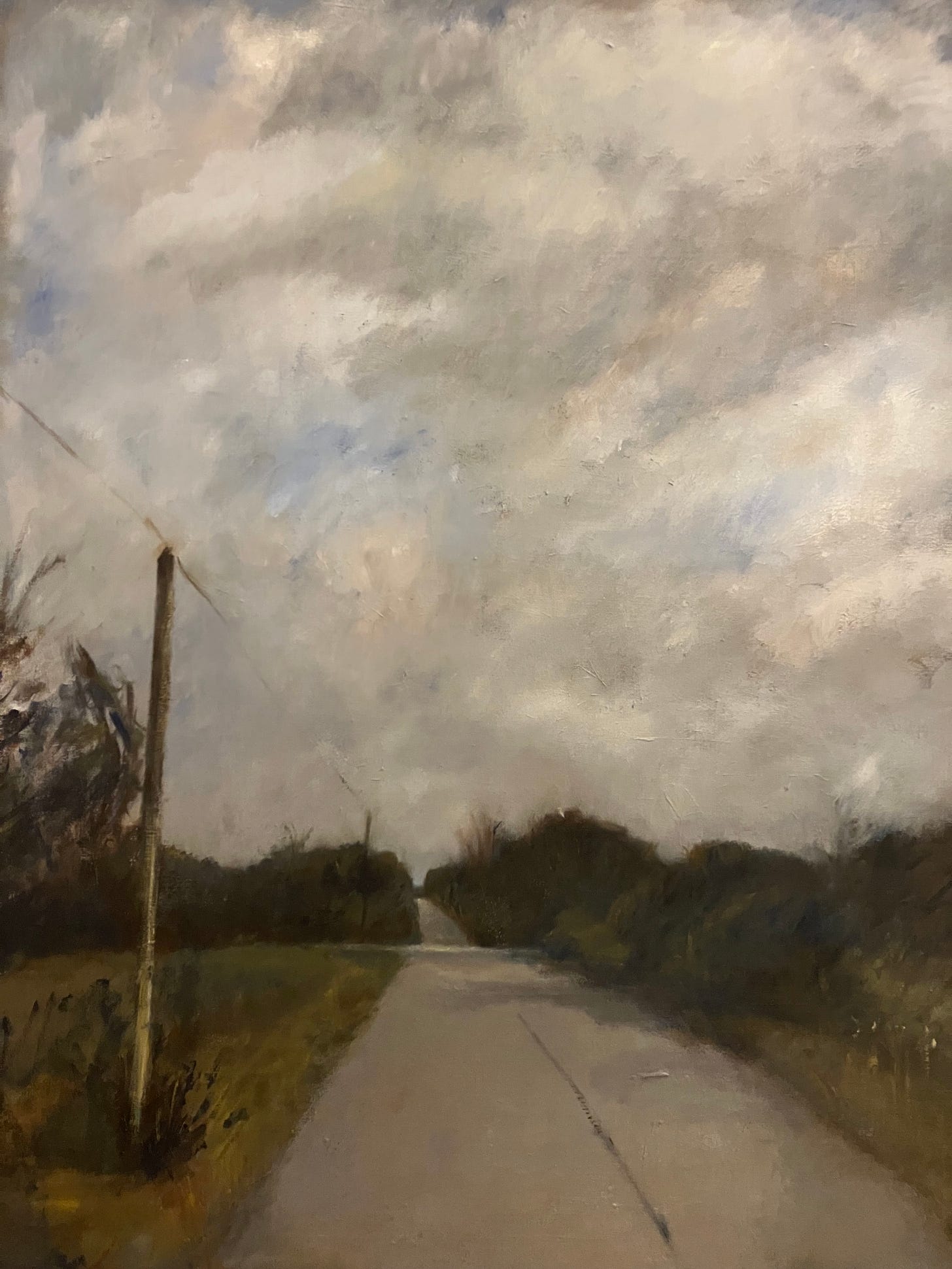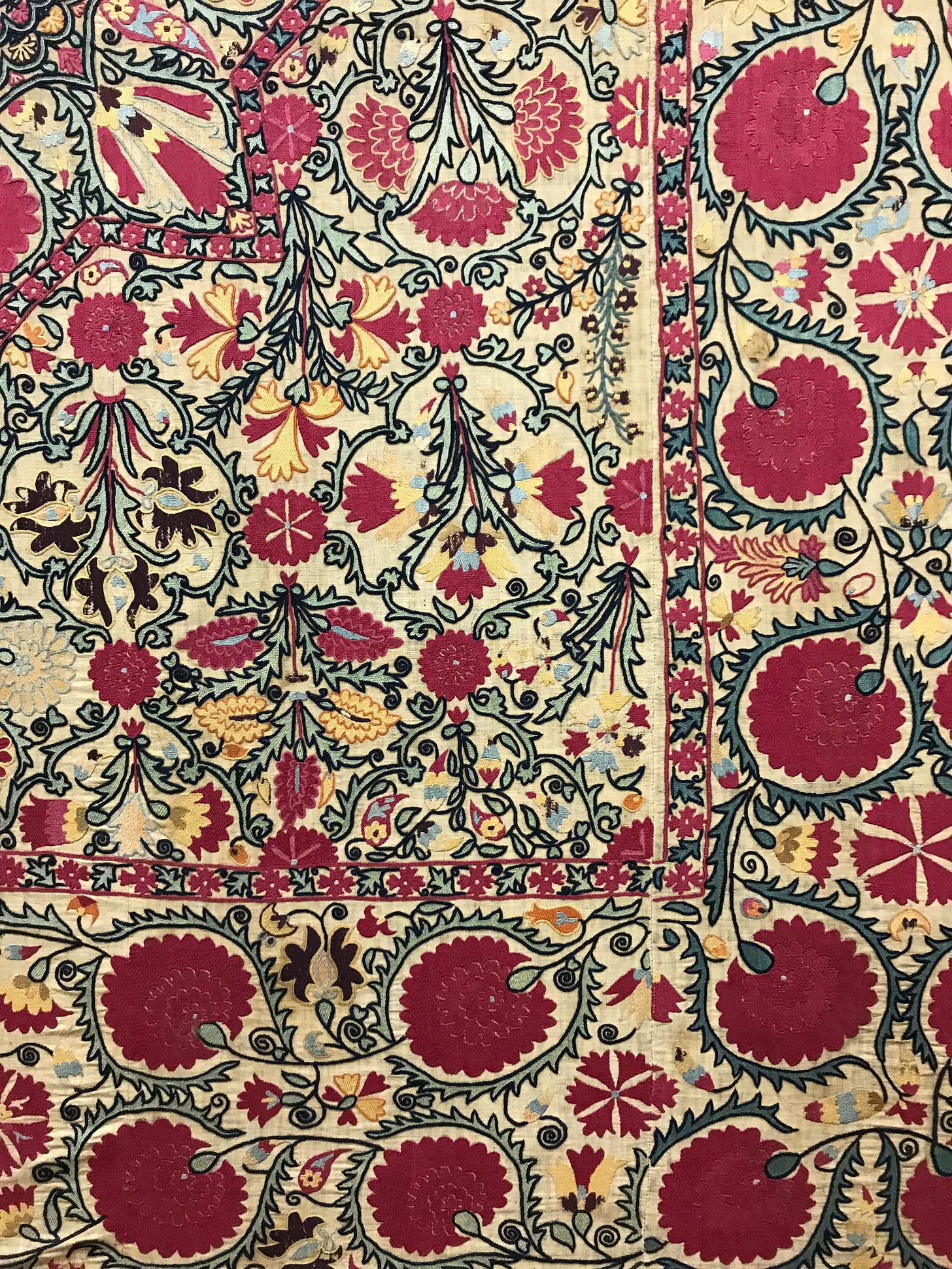an undefined limit
on borders, maps and mandalas; transformations and skin; and remembering how to ignore the fabricated and artificial.
Over the past week I have looked over many maps, obsessively zoomed in on data, looked at the lines and watched counties and states alike. I like maps. They are like books in their magic way of containing and transporting ideas. A book condensed to one whole view though, as if we could see all time. It’s how I imagine some sort of god senses time, BOOM! All at once. This is the power of a map, to give an idea of place in large, no matter its relation to the actual. I was looking at maps of counties and urban zones and lines and borders of jurisdictions; states and provinces, picturing who lived there, what they thought and dreamed and hoped. What they feared on the other side of the other painted lines, ideas of difference and other, all of these lines just spinning and zig zagging across the paper and screen. It reminded me of a friend's mother once telling me when looking at her house and garden on google earth for the first time, “I don’t know that place, I am no bird, that isn’t how I experience it.” There are implications of what might be missing.
A number of times throughout the year I bike from my house in the City of Toronto, 90 kilometers north to a large lake and a family cottage. The ride takes me along waterways and river valleys and through suburban zones and industrial quarters, agricultural beltways, into the country. On these rides there are set mental regions, psychogeographies: urban, rural, industrial. My favorite sections are the transition zones, because, unlike on maps, these borders or surfaces transition and take time to shift from one to another, they morph and meld rather than a sharp black line drawn in the ground. The lines are unclear and it is where places merge and connect.
The border of suburb to wilderness is of particular interest, something happens or is easier to see there. There are signs of things. There is a dirty unkempt humanness on the verges, debris, unfinished structures and construction trash slowly giving way to thicket and brush and tree and shrub. Small plants pushing through concrete with slow inevitability. The image of a rusty part of a chain link fence with tall grasses growing through. There are wild plants in the fringe, plants that are considered weeds on the inside of the urban areas but here are just life in this transition zone, left life. There is something telling to that, the messiness of humaness on the fringes of our manufactured worlds, like dust swept under the carpet seeping out of all sides. The fabricated detritus we leave behind us. When one moves through these zones, you are leaving behind the human made things and entering something else, something that is the opposite of virtual or artificial, something that does not pace its day with a wrist watch or a phone.
A few weeks ago I lost my sense of smell and taste from a bout of covid. It lasted 5 days or so and was so slightly strange and off-putting. It made present the reliance I have on smell, more so than I had realized, and it reminded me of the awkward connection we have with the physical world. Our senses, our bodily border that keeps things out and allows certain things in, they are the ways we experience outside of the soul and mind, the organs used to reach into the ether and bring back in information, no matter how subjective. Our exoderm is a nerve riddled cover, and although a shell it also absorbs; a passive membrane. There are other ways into the temple though, non sensing ways, emotive ways that aren’t taken in by the eye, ear, tongue, skin, nose but some other ephemeral connective organ, slowly like those small plants growing through concrete. These sensations take time to register, the natural pace of a decade, circadian rhythms and reliance on other living things. Electric pulses we collectively feel on the dance floor, connection. On a quantum level there are no differences between things, on the outside of the membrane of our skin. All are made up of the same material and that material is omnipresent and fluid and energetic and wavelike, like light, affected by being observed.
The borders of countries are a strange surface as well, membrane like but fabricated. A few years ago I crossed a border south of Nukus, Uzbekistan into Turkmenistan, over the Oxus into the Karakul Desert. This is a large place of shifting zones culturally as well as politically, the beginnings of a shift from Central Asia to Eastern Europe. Languages are moving here. It is an autonomous republic called Karakalpakstan, there are different folk tunes that connect the place with Georgia and Azerbaijan, over the Caspian. On the other side of Uzbekistan, the Fergana Valley, you have the origins of the Moghul empire tucked not too far from Xinjiang China. There is a lot happening in the landscapes and languages. This political border near Nukus was a place of Zoroastrianism, Islam, and there I found the grave site of Adam of the old testament. Like many other border zones this has a space of transition, an undefined limit. You process out of Uzbekistan and then walk a middle space to a process zone for Turkmenistan, and in between, you are nowhere, and there is rubble and old chain link fences with tall grasses growing through them.
I want to get better at knowing these transition zones, at ignoring the painted lines that are made on the map, ignoring the virtual and the fabricated for it is built with intentions that are not mine, and not honest. I want to change the maps and spaces and the ways I think about them and to interact with people and community not synthetically or artificially but through my own senses, in person, slowly.
Over the past week I was watching maps and borders of places I had lived, counties and states I knew; past tense. But I am no bird, that isn’t how I experience it.








